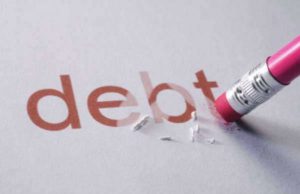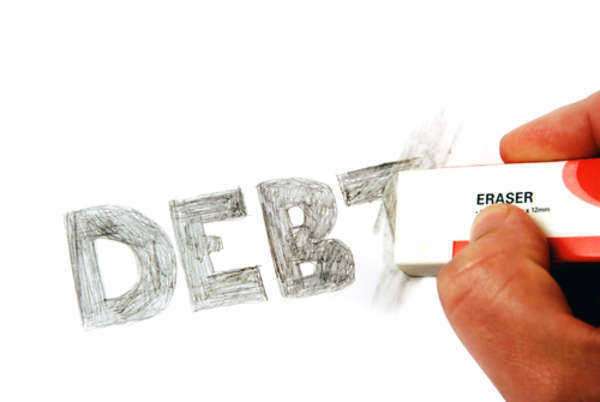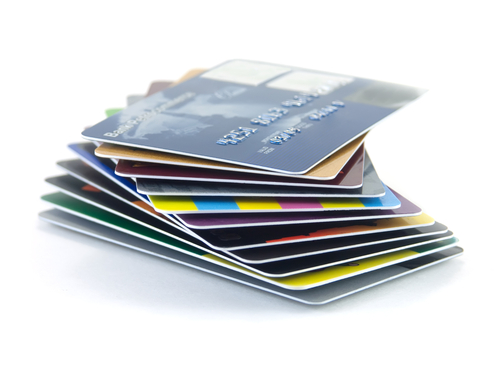
Introduction
Debt consolidation can be an effective way to manage multiple debts, reduce monthly payments, and get out of debt faster. With debt consolidation, multiple debts are combined into a single loan with one monthly payment, usually at a lower interest rate. However, it’s important to understand the pros and cons of debt consolidation before deciding whether it’s the right option for you.
What is Debt Consolidation?
Debt consolidation is the process of combining multiple debts into one loan with a single monthly payment. There are several types of debt consolidation loans, including personal loans, home equity loans, and balance transfer credit cards. The goal of debt consolidation is to simplify your debt payments and reduce your interest rates and fees.
Benefits of Debt Consolidation
1. Simplifies Your Finances – Consolidating multiple debts into one loan means you only have to make a single monthly payment. This can simplify your finances and make it easier to keep track of your debt.
2. Lowers Your Interest Rates – Consolidating high-interest debts, such as credit card debts, into a single loan with a lower interest rate can save you money on interest charges.
3. Reduces Your Monthly Payments – Consolidating your debts can reduce your monthly payments, making it easier to manage your budget.
4. Helps You Get Out of Debt Faster – Debt consolidation can help you get out of debt faster by reducing your interest charges and allowing you to make larger payments towards your principal balance.
Types of Debt Consolidation
1. Personal Loans – Personal loans are unsecured loans that can be used for debt consolidation. They can be obtained from banks, credit unions, and online lenders. Personal loans typically have fixed interest rates and repayment terms, making it easier to budget for your monthly payments.
2. Home Equity Loans – Home equity loans are secured loans that use your home equity as collateral. They typically have lower interest rates than unsecured loans, but they can put your home at risk if you’re unable to make your payments.
3. Balance Transfer Credit Cards – Balance transfer credit cards allow you to transfer high-interest credit card balances to a new card with a lower interest rate. This can help you save on interest charges, but it’s important to pay off your balance before the introductory rate expires.
4. Debt Management Plans – Debt management plans are offered by credit counseling agencies. They allow you to make a single monthly payment to the agency, which then distributes the funds to your creditors. Debt management plans may be able to negotiate lower interest rates and fees with your creditors.
Risks of Debt Consolidation
1. High Cost – Depending on the type of debt consolidation loan you choose, you may be charged origination fees, prepayment penalties, and other fees that can increase the cost of your loan.
2. Longer Repayment Term – If you extend your repayment term when consolidating your debts, you may end up paying more in interest charges over the life of your loan.
3. Risk of Default – Consolidating your debts doesn’t eliminate your debt. If you’re unable to make your monthly payments, you could default on your loan and damage your credit score.
4. Temptation to Use Credit Cards – If you consolidate your credit card debts with a balance transfer credit card, be careful not to use your old credit cards. Using your credit cards could increase your debt and make it more difficult to pay off your consolidated loan.
Government Resources on Debt Consolidation
1. Federal Trade Commission (FTC) – The FTC provides information about debt consolidation, including warning signs of debt relief scams and a guide to choosing a debt relief company.
2. Consumer Financial Protection Bureau (CFPB) – The CFPB provides information and resources about managing debt, including a debt consolidation guide and a list of questions to ask before consolidating your debts.
3. Department of Justice (DOJ) – The DOJ provides information about debt consolidation scams and enforcement actions against fraudulent debt relief companies.
Conclusion
Debt consolidation can be a useful tool for managing your debt, but it’s important to understand the pros and cons before making a decision. If you decide to consolidate your debts, be sure to shop around for the best loan terms and avoid scams by researching debt relief companies. With careful consideration, debt consolidation can help you achieve your financial goals and get out of debt faster.
Debt Consolidation Explained:
Debt consolidation is a financial maneuver commenced by individuals who have incurred mounting or unsustainable debts. Debt consolidation entails taking out a large loan to pay off other debts. Debt consolidation is initiated by financial institutions and credit card companies; these entities charge a fee to consolidate a borrower’s loans.
Debt consolidation is typically enacted to secure lower or fixed interest rates to expedite the fulfillment of repayment. As a result of this maneuver, the individual’s debts are lumped together to formulate one all-encompassing repayment plan.
By engaging in debt consolidation, a borrower will group numerous unsecured loans into one all-encompassing unsecured loan. An unsecured loan is a repayment obligation that is not backed by an individual’s asset–the creditor of an unsecured loan does not possess the right to foreclose on an individual’s asset to help relieve a portion of the loan. Common forms of unsecured debts include credit card payments or medical bills.
The Debt Consolidation Process:
Debt consolidation can be undertaken by the borrower him or herself or through the hiring of a professional credit counseling agency. If a borrower opts to engage in debt consolidation without the inclusion of a professional the individual is required to contact their underlying creditors to initiate a balance transfer. The foal of the consolidation is to transfer all debts to the individual’s low(est)-interest credit card. If this is achieved, the all of the borrower’s debts will be placed on the borrower’s lowest APR credit card.
To engage in the consolidation process with a professional, the borrower must contact a credit counseling agency in their area. The borrower will then engage in a consultation or preliminary interview where a credit counselor will review all of the individual’s debt and determine his or her eligibility for consolidation. If deemed appropriate the counselor will provide a quote or fee to the borrower. When accepted, the counselor will contact all of the borrower’s creditors to negotiate a mitigated repayment schedule. Once all creditors are contacted, the counselor will package all debts and calculate the new monthly payment at a fixed and lower interest rate.
A borrower, in the majority of debt consolidation initiatives, will consolidate a secured loan, such as a mortgage. In this example, the house acts as collateral for the loan—if the individual fails to meet their mortgage obligation the creditor will seize the liquidity within the home.
Consolidating a secured loan typically offers the debtor a lower interest rate; by consolidating, the borrower must abide by the collateral agreement of the asset to satisfy the loan. Because of the reduced risk, the borrower is awarded a lower interest rate.
All forms of debt–from credit cards, to student loans–can be consolidated. Although debt consolidation often lowers a borrower’s interest rate, the maneuver poses a series of long-term problems, specifically when a borrower consolidates unsecured debts into secured debts.
A borrower with property or considerable assets, such as a boat or car, may consolidate debts under a secured structure with a lower interest rate. In this form of debt consolidation, the individual’s assets will act as collateral.
Alternate solutions to collateralizing one’s debt include: credit counseling, filing for bankruptcy and engaging in debt settlements. Debt consolidation is advisable, in theory, when an individual is paying off mounting credit card debts. Because a credit cards carry a larger interest than other forms of loans—including unsecured loans from banks—debt consolidation is often initiated to pay-down or mitigate the effects associated with credit card debt.
Consolidating Student Loans:
In the U.S., federal student loans—which are guaranteed by the United States Federal Government—may be consolidated by the Department of Education, who purchases existing loans at a fixed interest rate established by the then-current interest rate. Reconsolidating student loans; however, does not change the borrower’s interest rate. If the student combines loans of different rates and types into a new consolidation loan, a weighted average calculation establishes the new rate based on the then-current interest rates of the various loans being grouped together.
Federal loan debt consolidation is referred to as refinancing, which is technically a malapropism because the loan rates do not change. Dissimilar to private debt consolidation, federal student loan consolidation does not incur any fees for the borrower; a private company may profit on a student loan consolidation by reaping subsidies from the government.
Concerns Involving Debt Consolidation:
The primary concern involving debt consolidation is that many borrowers consolidate unsecured debts into secured debts, typically secured against their mortgage/home. Although this action may lower the borrower’s monthly payments, the total repayment amount is significantly higher due to the increased length of the loan. Debt consolidation may therefore treat the symptoms of repayment while ignoring the long-term obligation.
























